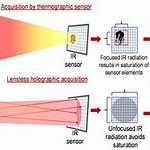Last Updated on 1 year by Francis
The human digestive system is an incredibly complex and important part of the body. It is responsible for breaking down food, extracting nutrients and energy, and getting rid of waste. In order to understand how it works, it is important to understand the main structures of the digestive system. In this article, we will explore the main components of the digestive system and how they work together to keep us healthy and functioning.
.
Contents
What are the Structural Parts of the Digestive System?
The human digestive system is composed of many different organs and components that work together to break down and absorb food. The main components of the digestive system are the mouth, esophagus, stomach, small and large intestines, liver, gallbladder, and pancreas. These organs work together to move food through the digestive tract and absorb nutrients into the body.
The mouth is the first part of the digestive system and it is where the process of digestion begins. The mouth is responsible for the initial breakdown of food through the process of chewing and saliva production. The saliva in the mouth contains enzymes that help to break down the food particles so they can be digested further down the digestive tract.
The esophagus is the tube that connects the mouth to the stomach. It transports food and liquids from the mouth to the stomach. The stomach is a muscular organ that stores and breaks down food using powerful stomach acids and enzymes.
Small Intestine
The small intestine is the longest part of the digestive system, measuring about 22 feet in length. Its main function is to absorb nutrients from the food that has been broken down by the stomach. The small intestine is divided into three sections: the duodenum, jejunum, and ileum.
The duodenum is the first section of the small intestine and it is where most of the absorption of nutrients takes place. It is here that the food is mixed with digestive enzymes and bile from the liver and gallbladder. The jejunum and ileum are the other two sections of the small intestine and they are responsible for the absorption of vitamins, minerals, and other nutrients.
Large Intestine
The large intestine is the last section of the digestive system and it is responsible for the absorption of water and electrolytes. It is also responsible for the formation of solid waste, which is then eliminated from the body through the process of defecation. The large intestine is divided into four sections: the cecum, colon, rectum, and anus.
The cecum is the first section of the large intestine and it is where most of the water and electrolytes are absorbed. The colon is the next section and is responsible for the absorption of water and the formation of solid waste. The rectum is the last section of the large intestine and it is responsible for the storage of solid waste before it is eliminated from the body through the anus.
Other Organs
The liver, gallbladder, and pancreas are other important organs in the digestive system. The liver is responsible for the production of bile, which helps to break down fats and absorb fat-soluble vitamins. The gallbladder stores and releases bile from the liver. The pancreas produces digestive enzymes and hormones that help to break down food and absorb nutrients.
The Role of the Digestive System
The digestive system is responsible for breaking down food, absorbing nutrients, and eliminating solid waste from the body. The digestive process begins in the mouth and ends in the large intestine. Along the way, the other organs of the digestive system help to break down food, absorb nutrients, and form solid waste. Without the digestive system, the body would not be able to get the important nutrients it needs to function properly.
Related Faq
What Are the Main Structures of the Digestive System?
Answer: The digestive system is made up of the alimentary canal (also called the digestive tract) and other accessory organs that play a role in digestion. These include the salivary glands, liver, gallbladder, and pancreas. The alimentary canal is composed of the mouth, esophagus, stomach, small intestine, and large intestine. The mouth is where the process of digestion begins, as food is chewed and mixed with saliva. The esophagus is a muscular tube connecting the mouth to the stomach. The stomach is a sac-like organ that mixes food with gastric juices, breaking it down into a paste-like substance. The small intestine is a long, coiled tube that is divided into three sections, the duodenum, jejunum, and ileum. Its primary function is to absorb nutrients from food. The large intestine is also divided into three sections, the cecum, colon, and rectum. Its main role is to absorb water and minerals from food, and form and store waste material before it is eliminated. Finally, the anus is the opening at the end of the digestive tract through which waste material is eliminated.
The digestive system is one of the most important and complex systems in the human body. It is responsible for breaking down food into usable energy, as well as eliminating waste. The main structures of the digestive system are the mouth, esophagus, stomach, small intestine, large intestine, rectum, and anus. Each of these structures play a crucial role in the digestive process. Understanding how each of these structures work together can help to ensure optimal digestive health and wellbeing.

.jpg)





